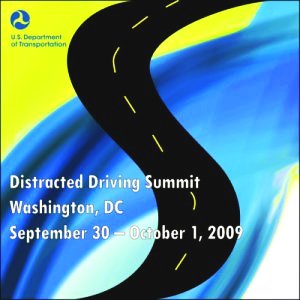As he predicted, at the conclusion of a two-day summit on distracted driving in Washington, D.C. today, U.S. Transportation Secretary Ray LaHood announced a series of actions that the Obama Administration and the U.S. Department of Transportation are taking to help put an end to distracted driving.
Last night, President Obama signed an Executive Order directing federal employees not to engage in text messaging or using cell phones while driving government-owned vehicles or while driving privately owned vehicles when they are on official government business. More than 4 million federal employees are involved in the order.
Left unclear in the moves is the regulatory status of cell phone use while driving. Critics of the ongoing lack of regulatory action on cell phones say that the texting ban is a political expedient that ignores the far larger problem. The use of any time of cell phone wile driving increases accident risk for to six time according to studies.
The order also encourages federal contractors and others doing business with the government to adopt and enforce their own policies concerning electronics and driving on the job that mirror the Executive Order.
“This order sends a very clear signal to the American public that distracted driving is dangerous and unacceptable. It shows that the federal government is leading by example,” said Transportation Secretary Ray LaHood.
“I fully expect that all 58,000 DOT employees and contractors will take this order seriously. Let’s show our friends and families that we can resist the temptation to answer the phone, send a message, or allow some other distraction to interfere with our driving.”
Secretary LaHood pledged to work with Congress to ensure that the issue of distracted driving is appropriately addressed. He also announced a number of immediate actions the Department is taking to combat distracted driving, including the Department’s plan to create three separate rulemakings that would consider:
- Making permanent restrictions on the use of cell phones and other electronic devices in rail operations.
- Banning text messaging altogether, and restrict the use of cell phones by truck and interstate bus operators.
- Disqualifying school bus drivers convicted of texting while driving, from maintaining their commercial driver’s licenses.
The Secretary also called on state and local governments to work with DOT to reduce fatalities and crashes by making distracted driving part of their state highway plans, and by continuing to pass state and local laws against distracted driving in all types of vehicles, especially school buses.
He asked states and local governments to back up public awareness campaigns with high-visibility enforcement actions. In addition, he said the Department is establishing an on-line clearinghouse on the risks of distracted driving, aimed especially at young people, which will give them information to help encourage good decisions.
Secretary LaHood also pledged to continue the Department’s research on how to best combat distracted driving. As part of this pledge, the Department will launch a new demonstration program this year to evaluate techniques that states can use to get the most out of their efforts to end this destructive behavior.
“Keeping Americans safe is without question the federal government’s highest priority – and that includes safety on the road, as well as on mass transit and rail,” said Secretary LaHood. “I’m greatly encouraged by the work accomplished at this summit. Working together, we’re going to make sure that traveling in America is as safe as it can possibly be and I strongly encourage the public to take personal responsibility for their behavior and show a healthy respect for the rules of the road.”
The two-day summit brought together safety experts, researchers, industry representatives, elected officials and members of the public who shared their expertise, experiences and ideas for reducing distracted driving behavior and addressed the safety risk posed by this growing problem across all modes of transportation. Authoritative speakers from around the nation led interactive sessions on a number of key topics including the extent and impact of distracted driving, current research, regulations and best practices. Individuals from 49 states participated in the summit via the web.


Excerpts from the blog of the U.S. Department of Transportation Secretary Ray LaHood:
Distracted Driving Summit is a productive start to an urgent situation–but only a start
Some years from now, when we have made significant progress defeating the epidemic that is Distracted Driving, we will remember this moment.
Now, that is not to say that people haven’t already been working to reduce this threat for several years. Those people, who were way out in front on this, deserve all the credit in the world.
But, yesterday and today, at our Distracted Driving Summit, we achieved what can only be described as critical mass.
For that, I thank everyone involved in the Distracted Driving Summit, from DOT organizers to panelists to web-followers. And, once again, I want to particularly thank those advocates who have lost family members to this irresponsible driving practice; I admire their courage for publicly telling and re-telling what must be painful, painful stories.
We won’t fix this problem overnight, but we are going to raise awareness and sharpen the consequences.
In the end, however, we cannot simply legislate this problem away. If we’re going to improve road safety in this country, we’re going to need our drivers to use common sense and show some consideration for other drivers and their passengers, for pedestrians, and for bicyclists.
As the grandfather of 9 great kids and as Transportation Secretary, I want to know that our roads will be safe.
By this time next year, every driver in America should be far more aware of the risks and consequences of distracted driving. Driving while distracted should feel wrong–just as driving while intoxicated now feels wrong to most American drivers.
These past two days, we made a great start, and we will remember this moment. But these discussions will prove meaningless unless we follow up with action. We should all be encouraged, but none of us should be content.